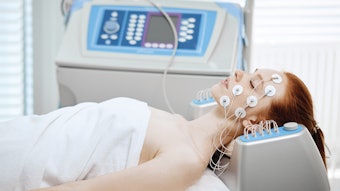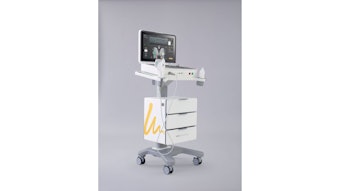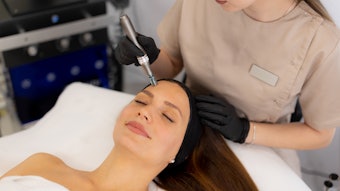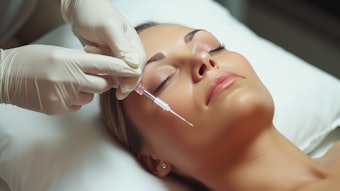As a whole, the spa industry is fraught with many problems that can be traced to its high rate of staff turnover. It creates bedlam with startup businesses, in particular, and drains resources, including time, energy and money. Turnover is more than an interruption; it interferes with the development of a smooth operation, the creation of a strong, unified team and, ultimately, the financial success of a spa. In order to address this issue, you must remember that your medical spa’s culture begins with you and your vision, along with the planning, coordination and performance of recruitment, training and management.
Mapping out a model
As the spa’s owner or manager, participating in day-to-day operations, as well as knowing your own strengths and weaknesses, will assist you in building your staff. The most successful leaders surround themselves with the best team.
Having a business plan that includes the facility’s size, type of equipment, service menu and hours of operation is crucial when mapping your staffing needs from a logistical standpoint. As a manager, you should be well versed in the regulatory compliance facet of the medical spa industry. Each state has its own medical, nursing and cosmetology boards that identify the procedures and treatments that can be performed by licensed professionals. Log on to www.SkinInc.com/resources/931607.html for the complete contact information of each state’s cosmetology board.
From start to finish, a typical time frame for staff recruitment is approximately 45–60 days before opening. This includes time to compose a recruitment ad, craft a job description and confirm a salary amount. The first round of interviews—usually via telephone—should occur within two weeks of initiating the hiring process. Create a standard set of questions that enables the interviewer to compare data. This holds true both for the initial interview and the more in-depth face-to-face interview later in the process. You will want to have your staff selected two to three weeks prior to the spa’s opening for training and setup.
The recruitment process
Don’t wait too long before initiating the hiring process, because falling behind schedule can cause you to cut corners. Slapping together a haphazard employment ad, forgoing a well-thought-out job description and interviewing a string of candidates willy-nilly will lead you down the path of poor staff selection and high turnover. This is a big mistake. Your team can make or break your business, so take the time to compose a hiring plan well in advance of your spa’s opening.
Most medical spa managers are inclined to initially employ only seasoned staff and are opposed to interviewing other polished professionals who possess strong transferable skills and a can-do attitude, but require training. Hiring an experienced team member does not guarantee a flawless operation, or eliminate the potential for poor customer service or the need to train your staff. There is no way for you to evaluate the previous employer’s training program. Inevitably, there are going to be differences in equipment, services, clinical protocols, products, vision, values and goals.
Experienced professionals sometimes come equipped with a well-practiced and established way of doing things. They may or may not resist new methods, and might be reluctant to change their preferred routine. Even worse, they may be overly critical of your business choices.
Attitude is everything
Suppose that two people walk through the door for a job interview possessing impressive résumés, levels of experience and skills. They are equally qualified. What factor determines who should get the job? The answer: attitude. Attitude is how you treat others, how you respond to challenges, and whether you sink or swim. In short, it is the manner in which life is approached. It creates experiences for you and others. Success and happiness depend on and begin with attitude.
Skills, knowledge and experience all are functions of a positive attitude. Excelling in a chosen profession, as well as continuing to learn and grow within that occupation, is a choice. Having a polished appearance also is an extension of a positive mind-set, and because a medical spa provides image-based services, it is important for team members to set an example for their clients.
Making an offer
Congratulations! You have identified a great team lineup, but what will it take to get these individuals on board and, more importantly, to retain them? From the interview process, you should have gained a fairly accurate picture of what you have to work with: full-time, part-time or per diem employment; salary or hourly requirements; benefit expectations; an incentive or bonus structure; and paid time off and other compensation. As a small- business owner or manager, a thorough understanding of your business model and the needs of your staff will help you to devise a customized plan that makes everyone happy. Money is money, but certainly there are other considerations when creating a compensation plan. Flex hours, a health insurance allowance for part-time employees, a monthly allowance of free or discounted procedures, growth opportunities and a calm, professional work environment all are incentives.
Generally, performance-based pay provides estheticians with the greatest earning potential without decreasing a medical spa’s profit margin. Incentives not only motivate, they also foster a sense of empowerment and responsibility. Team members look to themselves—rather than at you—to increase their paychecks. Employers who utilize performance-based pay may elect to provide bonuses for both service and retail. It is more common, however, for estheticians to receive an incentive on retail products sold, along with their hourly base and tips. The percentage usually ranges from 7–12% on retail sold. This multipronged approach can be very lucrative. Some medical spas have instituted a universal “no tipping” policy for all staff. It is important to develop a vision of hiring and compensation because it is a reflection of the business’ culture.
Putting your best foot forward
First impressions matter. Just as you have high expectations of your new team members, they will have the same of management and the training that is provided. It is critical to deliver a well-thought-out, comprehensive employee training program that is scheduled conveniently and administered in a fun, enthusiastic manner. Dry material doesn’t stick. Training with creativity and passion will provide the desired work environment for your medical spa team and set the working foundation for future team meetings and day-to-day operations.
It is said that variety is the spice of life, and this can hold true with training. There is a lot to be learned—including scheduling software, retail products, performing a consultation, up-selling, cross selling, loyalty building, customer service etiquette, and hands-on learning for new equipment and products. Create a curriculum and an agenda, and optimize training by partnering with vendors’ and manufacturers’ clinical educators. Make it fun and interactive. You might want to start with presenting a training goody bag that includes the agenda, training materials, skin care product samples and healthy snacks, such as whole fruit or energy bars. Don’t underestimate the importance of pausing for breaks throughout the day. Consider offering cucumber treatments for sore, strained eyes if working with computers, or lead an invigorating walk around the block to get the blood flowing. Test your team members throughout the session to monitor objectively how the information is being retained and understood. Just as you started training by presenting small gifts, you may want to end on a high note with a catered lunch and graduation certificates.
It is important that all team members attend the same preparation sessions and are cross-trained in scheduling, telephone skills, consultations and product knowledge. It also is imperative that electricity, running water, inventory and equipment are available. As standard as this sounds, training can be limited by an unfinished build-out, and such an obstacle is a sure sign of trouble. Nothing defeats team morale more effectively than not providing the proper tools and adequate training.
The three C’s
Having a job completed in a certain manner and at a specific level of quality requires recruiting the correct staff, providing solid training and instilling the need for constant communication, cooperation and coordination. It is critical to obtain assurances from your team members that they are competent and comfortable with the information imparted during training. If you hear that more is needed, provide it—this is your responsibility. Invest in your team, and you invest in your business. Instruction often leads to maintaining the quality and service level that first was introduced. It is human nature to develop a comfort zone throughout time and to gradually stray from standardized procedures.
Conducting regular team meetings, setting clearly defined and achievable goals, providing continuing education and networking opportunities, and honoring successes are management 101 tools of the trade. They will enhance your staff’s internal experience and create a beneficial environment for your clients.
There are no shortcuts to establishing a positive medical spa culture. Be aware of what you are getting yourself into before you are in too deep. You must know exactly what kind of experience you want to present before you open your doors. This can be accomplished through careful planning and consistent implementation. Because stress and anxiety have become prominent lifestyle behaviors, be cognizant of the experiences that you are creating with your team, as well as how they dovetail into those of your clients. Remember, it all starts with you.










